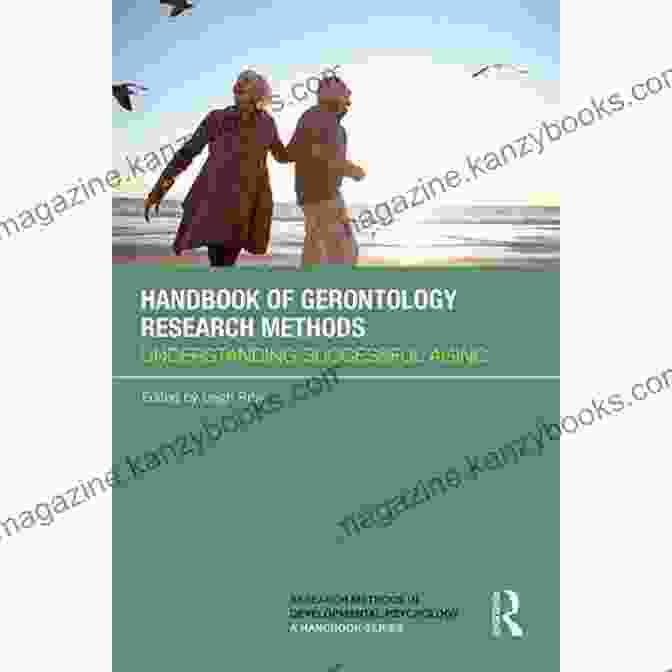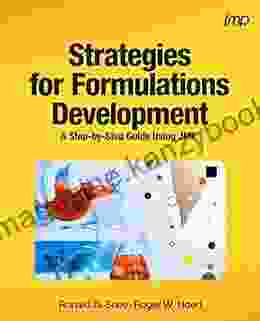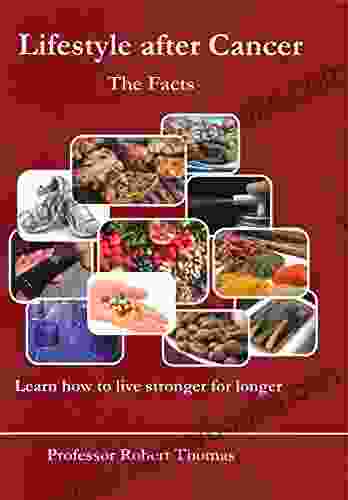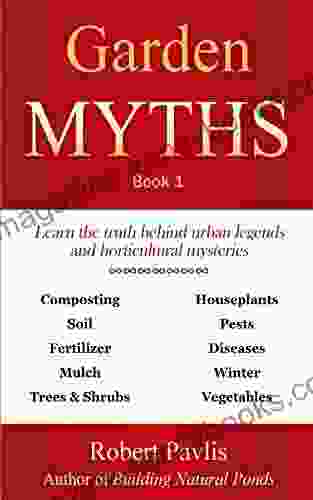Unveiling the Tapestry of Successful Aging: A Comprehensive Guide to Research Methods in Developmental Psychology


As life expectancies continue to rise, understanding the complexities of successful aging becomes increasingly imperative. Developmental psychologists have dedicated themselves to exploring this topic, employing a diverse array of research methods to unravel the intricacies of this multifaceted process. This comprehensive article delves into the essential methods used in successful aging research, providing valuable insights for researchers, practitioners, and individuals navigating the path of aging.
5 out of 5
| Language | : | English |
| File size | : | 2209 KB |
| Text-to-Speech | : | Enabled |
| Screen Reader | : | Supported |
| Enhanced typesetting | : | Enabled |
| Word Wise | : | Enabled |
| Print length | : | 267 pages |
Observational Methods
Observational methods involve directly observing and recording the behavior and experiences of older adults in their natural settings. These methods offer valuable insights into everyday functioning and social interactions.
1. Naturalistic Observation
Researchers observe older adults in their homes, community centers, or other real-world settings. This method provides rich, detailed data on daily routines, social interactions, and environmental influences.
2. Participant Observation
Researchers become active participants in the lives of older adults, immersing themselves in their experiences and gaining firsthand understanding of their perspectives. This approach offers a deeper level of engagement and trust.
Interview-Based Methods
Interviews allow researchers to gather qualitative data by engaging in conversations with older adults. These methods provide valuable insights into subjective experiences, beliefs, and values.
1. Structured Interviews
Researchers ask a standardized set of questions to elicit specific information from older adults. These interviews offer consistent data for quantitative analysis.
2. Semi-Structured Interviews
Researchers use a flexible interview guide to explore specific topics while allowing for open-ended responses. This approach combines the benefits of structure with the flexibility to delve into unanticipated areas.
3. Unstructured Interviews
Researchers engage in open-ended conversations with older adults, allowing them to freely share their thoughts and experiences. This method offers the deepest level of qualitative data but requires careful analysis.
Cognitive Assessment Methods
Cognitive assessment methods evaluate the cognitive abilities of older adults, including memory, attention, and reasoning. These methods provide insights into cognitive changes associated with aging.
1. Neuropsychological Testing
Researchers administer standardized tests to assess cognitive functioning across various domains, such as memory, executive function, and language. This method offers objective and quantifiable data.
2. Cognitive Screening Tests
Brief screening tests are used to identify potential cognitive impairments. These tests can be administered in clinical or research settings to provide a quick assessment of cognitive status.
Physiological Assessment Methods
Physiological assessment methods measure the physical characteristics and responses of older adults, including physical health, sleep quality, and hormonal changes. These methods provide insights into the biological aspects of aging.
1. Physical Examinations
Researchers conduct physical examinations to assess overall health status, including blood pressure, heart rate, and body mass index. These examinations provide valuable data on physical functioning and disease presence.
2. Sleep Studies
Researchers monitor sleep patterns and quality using polysomnography or actigraphy. Sleep studies provide insights into sleep disturbances and their impact on overall well-being.
3. Hormonal Assays
Researchers measure levels of hormones, such as cortisol and testosterone, to assess endocrine changes associated with aging. These assays provide insights into the relationship between hormones and cognitive and physical functioning.
Longitudinal Research Designs
Longitudinal research designs follow the same group of older adults over an extended period, capturing changes in outcomes over time. These designs offer valuable insights into trajectories of aging.
1. Cross-Sectional Studies
Researchers compare data from different groups of older adults at a single point in time. This method provides a snapshot of aging at different stages but does not capture individual change over time.
2. Prospective Longitudinal Studies
Researchers follow the same group of older adults over time, collecting data at multiple time points. This method allows for detailed analysis of changes in outcomes and identification of risk factors.
3. Retrospective Longitudinal Studies
Researchers collect data from older adults about their past experiences and characteristics to reconstruct their developmental trajectory. This method is useful for exploring long-term effects of early-life experiences.
Emerging Research Methods
Recent advances in technology have led to the development of innovative research methods that enhance our understanding of successful aging.
1. Experience Sampling Methods
Researchers collect data from older adults in real time using smartphones or other devices. This method provides insights into daily experiences and their relationship with well-being.
2. Neuroimaging Techniques
Researchers use MRI and PET scans to examine brain structure and function in older adults. These techniques provide valuable insights into the neural correlates of cognitive and emotional processes.
3. Genetic and Epigenetic Studies
Researchers explore the role of genetics and epigenetics in successful aging. These studies identify genetic and environmental factors that influence individual differences in aging trajectories.
Ethical Considerations
Ethical considerations are paramount in successful aging research. Researchers must ensure the safety, privacy, and well-being of older adult participants. Informed consent, confidentiality, and respect for autonomy are essential principles.
Applications and Implications
Understanding successful aging research methods has profound implications for policy, practice, and individual well-being.
1. Policy Development
Research findings inform policies and programs that support older adults' health, well-being, and independence. This includes policies on healthcare, retirement planning, and eldercare.
2. Intervention Development
Research methods help develop and evaluate interventions that promote successful aging. These interventions may target cognitive function, physical health, or social engagement.
3. Individual Empowerment
Research findings empower older adults to make informed decisions about their health and well-being. By understanding the factors that contribute to successful aging, individuals can take proactive steps to enhance their own aging experience.
Successful aging research methods provide a multifaceted lens through which we can explore the complexities of aging. By employing a diverse array of observational, interview-based, cognitive, physiological, longitudinal, and emerging methods, researchers unravel the intricate tapestry of this lifelong process. These methods not only deepen our understanding but also inform policies, interventions, and individual choices that promote the well-being and resilience of older adults. As we navigate the path of aging, these research methods serve as invaluable guides, illuminating the ways to age successfully with dignity, purpose, and fulfillment.
5 out of 5
| Language | : | English |
| File size | : | 2209 KB |
| Text-to-Speech | : | Enabled |
| Screen Reader | : | Supported |
| Enhanced typesetting | : | Enabled |
| Word Wise | : | Enabled |
| Print length | : | 267 pages |
Do you want to contribute by writing guest posts on this blog?
Please contact us and send us a resume of previous articles that you have written.
 Book
Book Novel
Novel Page
Page Chapter
Chapter Text
Text Story
Story Genre
Genre Reader
Reader Library
Library Paperback
Paperback E-book
E-book Magazine
Magazine Newspaper
Newspaper Paragraph
Paragraph Sentence
Sentence Bookmark
Bookmark Shelf
Shelf Glossary
Glossary Bibliography
Bibliography Foreword
Foreword Preface
Preface Synopsis
Synopsis Annotation
Annotation Footnote
Footnote Manuscript
Manuscript Scroll
Scroll Codex
Codex Tome
Tome Bestseller
Bestseller Classics
Classics Library card
Library card Narrative
Narrative Biography
Biography Autobiography
Autobiography Memoir
Memoir Reference
Reference Encyclopedia
Encyclopedia Ritesh Modi
Ritesh Modi Kimberly Carson
Kimberly Carson Kenzie Swanhart
Kenzie Swanhart Tom Shroder
Tom Shroder Wendelin Van Draanen
Wendelin Van Draanen William Pullen
William Pullen Kenneth Brighenti
Kenneth Brighenti Somer Mccowan
Somer Mccowan Renee Wade
Renee Wade Pat Lafrieda
Pat Lafrieda Matt Horn
Matt Horn Rough Guides
Rough Guides Seth Adam Smith
Seth Adam Smith Sandra Mendelson
Sandra Mendelson Kelvin Sprinkle
Kelvin Sprinkle Nick Bruel
Nick Bruel Meeg Pincus
Meeg Pincus Phillip Mountrose
Phillip Mountrose Mark Pallis
Mark Pallis Kevin Begos
Kevin Begos
Light bulbAdvertise smarter! Our strategic ad space ensures maximum exposure. Reserve your spot today!

 Jaime MitchellStrategies For Formulations Development: The Ultimate Guide to Innovation and...
Jaime MitchellStrategies For Formulations Development: The Ultimate Guide to Innovation and...
 David MitchellSupplication Prayers From The Holy Quran: A Path to Spiritual Fulfillment and...
David MitchellSupplication Prayers From The Holy Quran: A Path to Spiritual Fulfillment and...
 Gregory Woods**The Revolutionary Ann Boroch Protocol: Unlock Your Full Potential in Year...
Gregory Woods**The Revolutionary Ann Boroch Protocol: Unlock Your Full Potential in Year... John ParkerFollow ·18k
John ParkerFollow ·18k Samuel BeckettFollow ·10.6k
Samuel BeckettFollow ·10.6k Chuck MitchellFollow ·2.4k
Chuck MitchellFollow ·2.4k Efrain PowellFollow ·6.8k
Efrain PowellFollow ·6.8k Jacob HayesFollow ·18.9k
Jacob HayesFollow ·18.9k Chance FosterFollow ·2.7k
Chance FosterFollow ·2.7k Keith CoxFollow ·5.5k
Keith CoxFollow ·5.5k Derek CookFollow ·2.2k
Derek CookFollow ·2.2k

 Ernesto Sabato
Ernesto SabatoLoving Table: Creating Memorable Gatherings
Gatherings...

 Mark Twain
Mark TwainLifestyle After Cancer: The Facts
Cancer is a life-changing...

 Keith Cox
Keith CoxUnlocking the Nutritional Needs of Individuals with...
Individuals with physical disabilities...

 Rubén Darío
Rubén DaríoHandbook And Guide To Evaluation And Treatment
Empowering Healthcare...

 Andy Hayes
Andy HayesUnveiling the Truth: "Garden Myths" by Robert Pavlis...
The world of gardening is often filled with a...
5 out of 5
| Language | : | English |
| File size | : | 2209 KB |
| Text-to-Speech | : | Enabled |
| Screen Reader | : | Supported |
| Enhanced typesetting | : | Enabled |
| Word Wise | : | Enabled |
| Print length | : | 267 pages |







